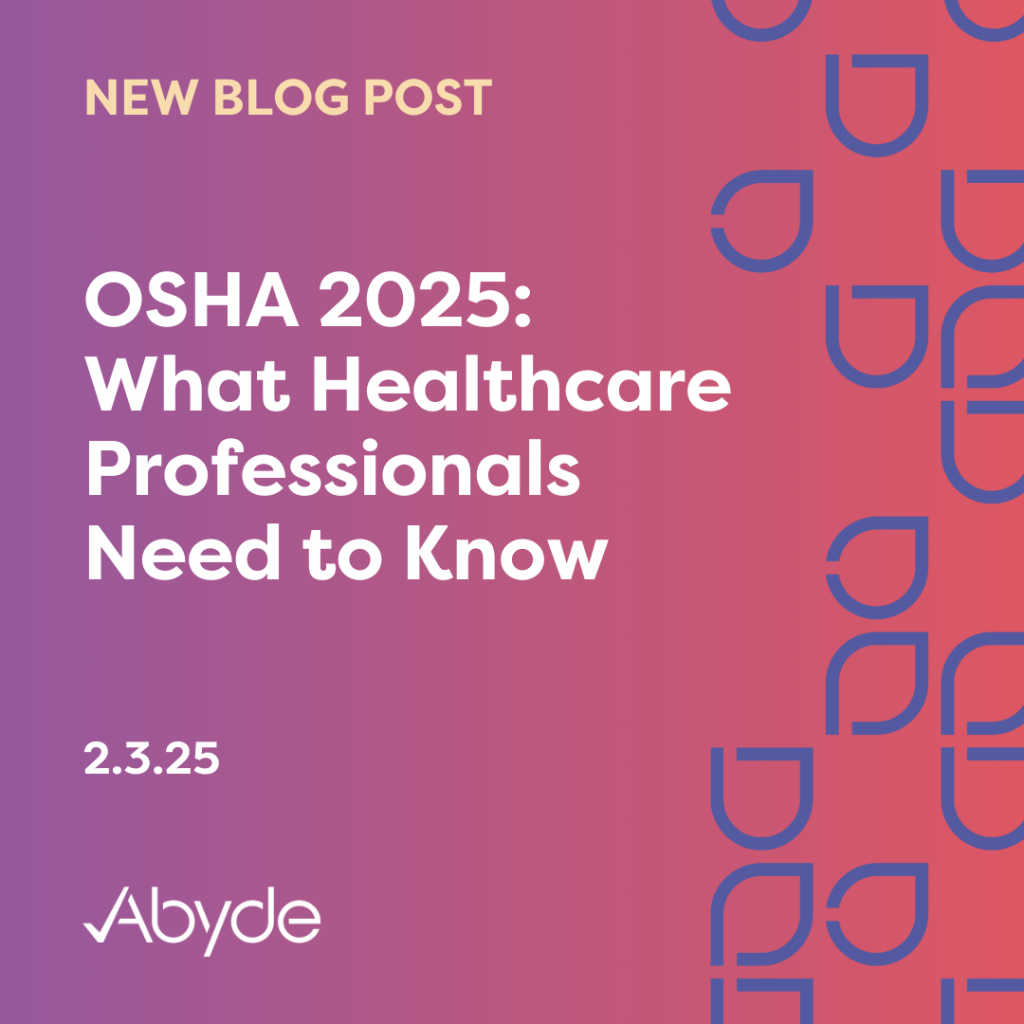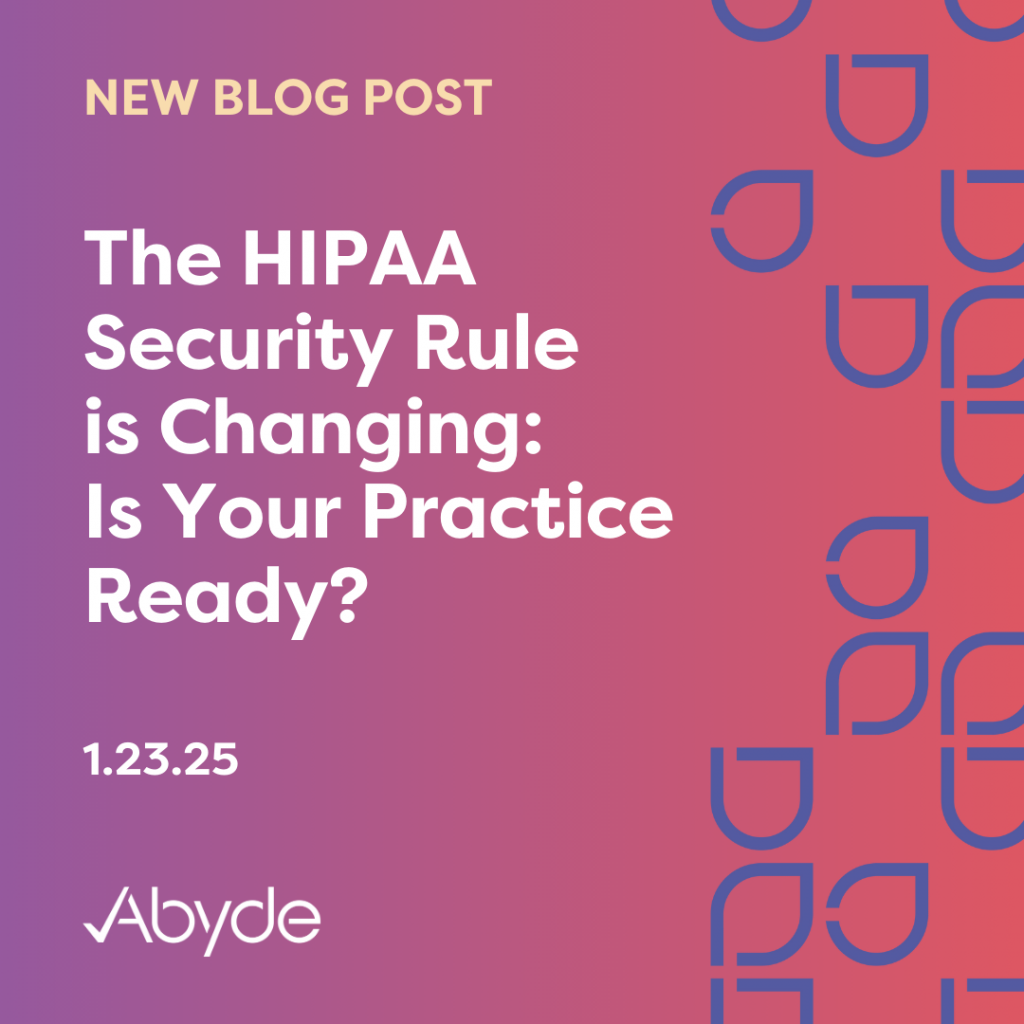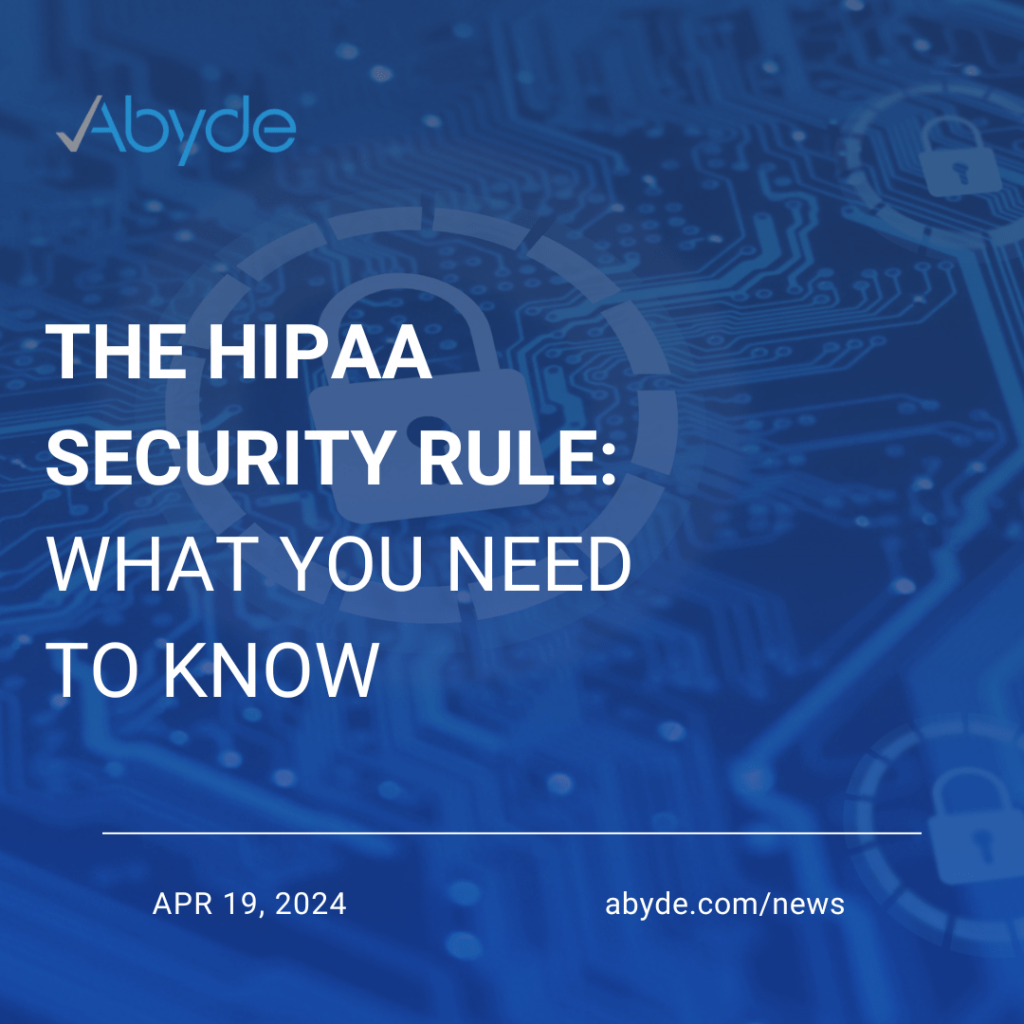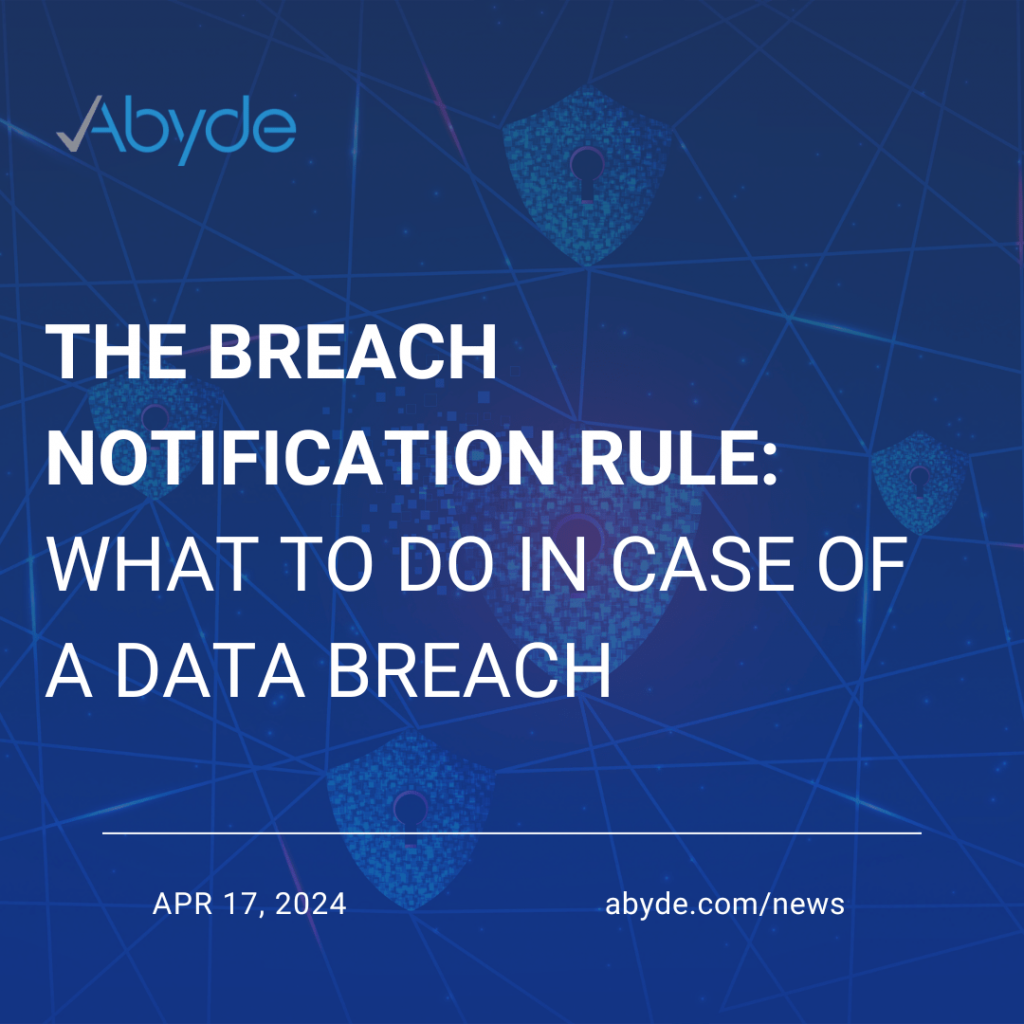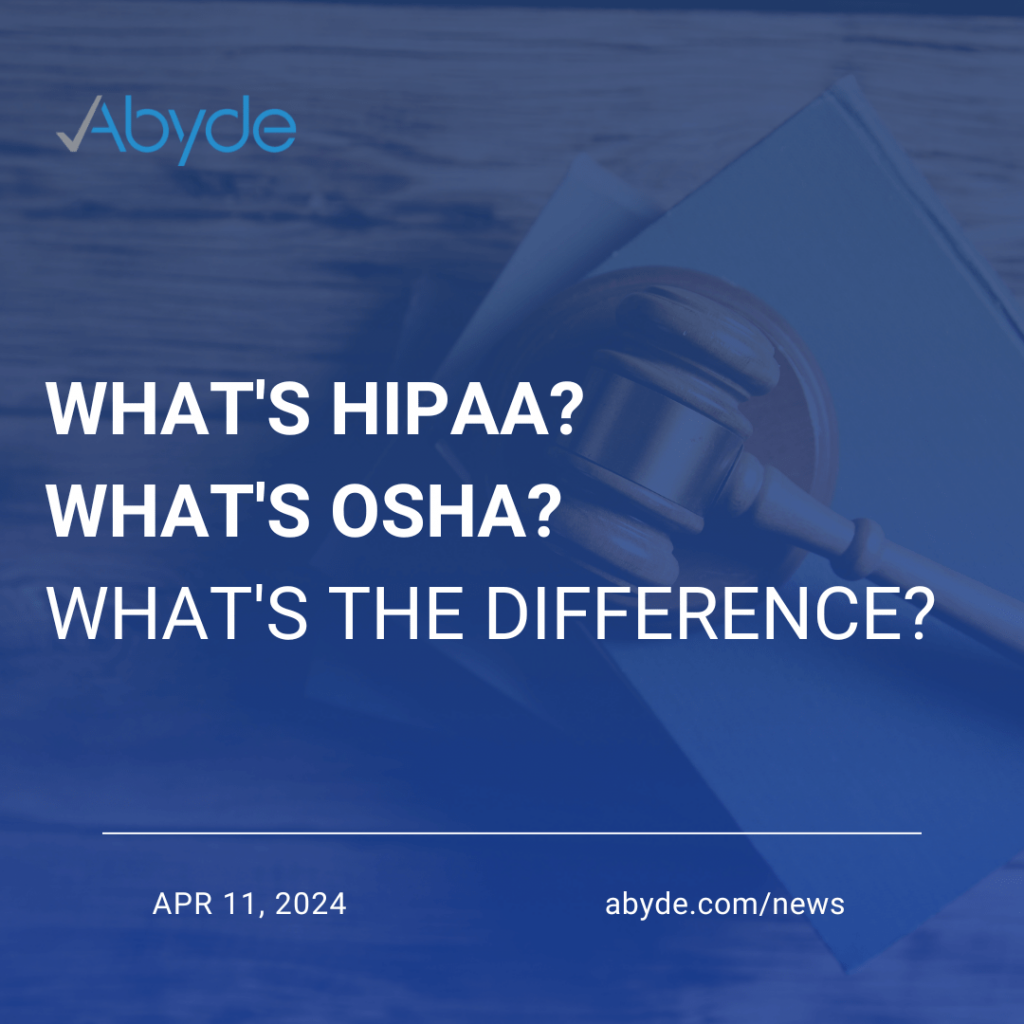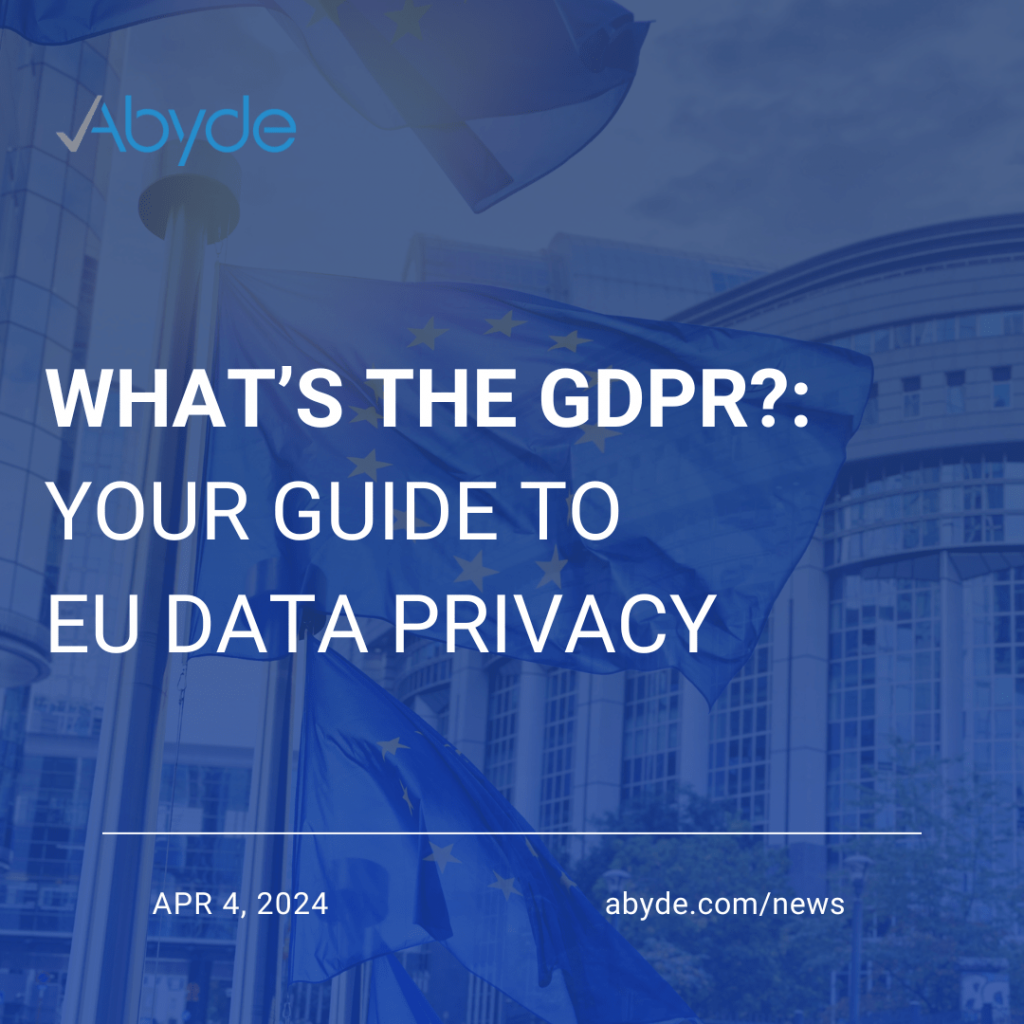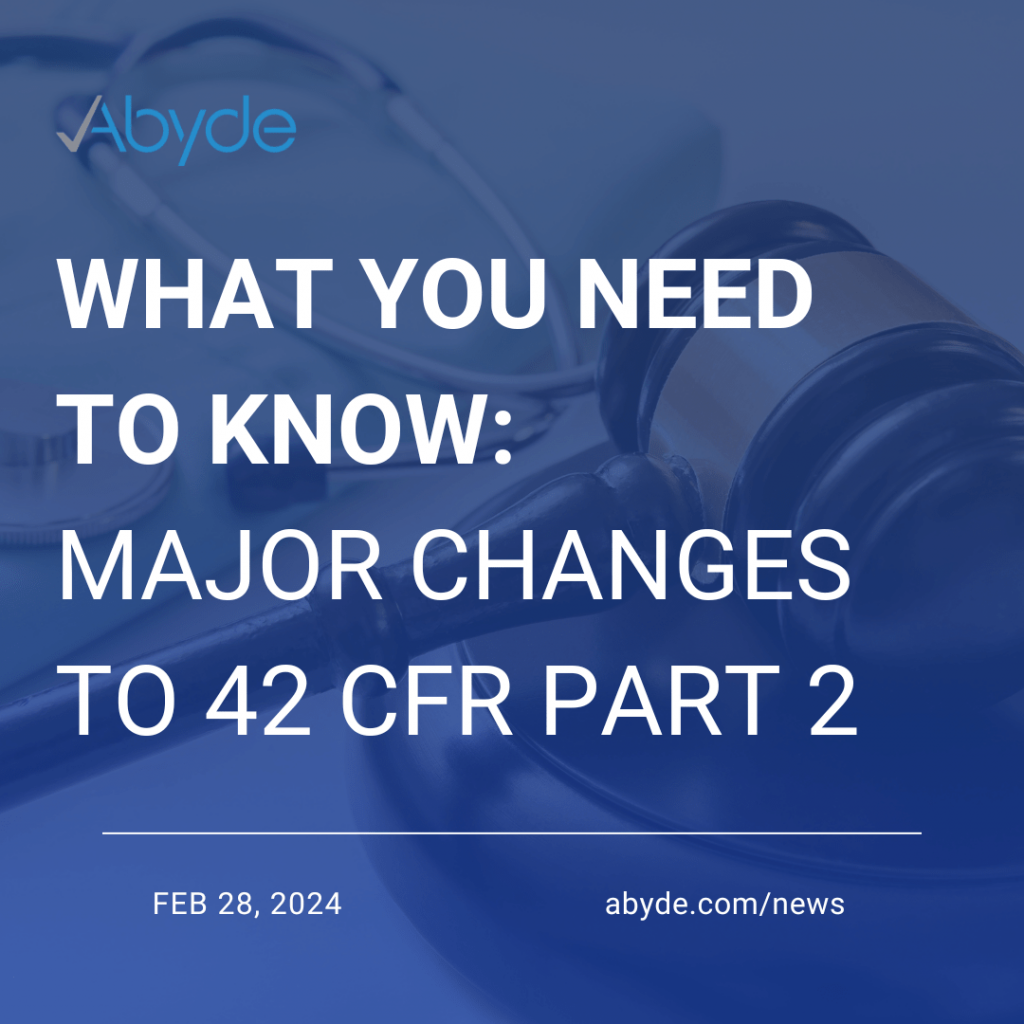October 29, 2025 By now, you’d have to be hiding under a rock to miss the headlines surrounding the government shutdown. The impact of this federal funding freeze is hitting nearly every major industry in the United States. While we aren’t sure when it will end, it’s shaping up to possibly be the longest government shutdown ever. However, lost in the political chess match is news about a vital resource for medical practices: The Health and Human Services Office for Civil Rights (HHS OCR) Security Risk Analysis (SRA) tool has been taken offline. The SRA website as of October 29, 2025 This tool is necessary for healthcare practices to analyze the technical, physical, and administrative safeguards they have to secure Protected Health Information (PHI). Without it, practices could be left with serious violations that jeopardize their practice and their patients’ confidential information. While it may not seem like a big deal for a government website to be hit with a “be back soon” message, the SRA is a major resource for healthcare practices looking to implement the most effective and appropriate precautions necessary for compliance. During the last round of audits, only 14% of practices were able to produce compliant documentation, but with the SRA tool rendered ineffective, that number could go even lower. Unfortunately, this isn’t the first time the tool has gone down. So, what do practices do in the meantime? The instability of the government-run SRA highlights the importance of implementing a comprehensive compliance program for every single practice that wants to meet the requirements of federal and state regulations. (Hint: that should be every practice.) How Compliance Software Can Help Your Practice Fortunately, there are solutions available that aren’t beholden to DC downtime, like Abyde. Abye’s medical compliance software offers an SRA tool that was built using the government’s requirements, but presented in a more digestible format. This tool (which is online today!) gives practices the same insight into potential vulnerabilities that could violate compliance and lead to serious consequences. But even better, the software solution dives deeper – after all, the information revealed by the SRA is just the tip of the iceberg. HIPAA compliance is a thorough and continuous process, and your practice must cultivate a culture of compliance to pass audits, protect patient data, and maintain the integrity of your business. The right software can help you not only spot vulnerabilities but mitigate them with end-to-end training, dynamic policy and procedure generation, BA documentation, and more. It also provides resources like compliance checklists that can shield your practice from common pitfalls and costly fines. Beyond the tangible benefits, thorough compliance software offers expert support to assist with HIPAA compliance questions, complaints, breaches, and audits. The SRA tool is a stepping stone to compliance; a centralized hub lets your practice know exactly where it stands. Getting Compliant Today Even amid a shutdown, your HIPAA obligations don’t pause. Sooner or later, the two sides will play nice and we’ll be back to our regularly scheduled investigations. Don’t let your compliance slide in the meantime! A modern platform centralizes your SRA, policies, BAAs, training, and support so you always know what’s done, what’s due, and what’s at risk. Meet with a compliance expert today to learn more about HIPAA compliance in your practice.
OSHA 2025: What Healthcare Professionals Need to Know
February 3, 2025 We’ve already seen that 2025 will be a year of major healthcare compliance changes, with the OCR releasing the long-awaited updates to the Security Rule proposal. Similar to how HIPAA laws are being updated, OSHA will likely update key legislation for healthcare workers. Healthcare workers experience the highest rates of workplace injuries, with an average of 3.6 injuries for every 100 employees. Healthcare environments can present many hazards, so it is essential that your staff knows how to prevent and mitigate dangerous situations. While some OSHA initiatives have not been finalized, OSHA has already started the year with legislation that impacts healthcare workers. Increased Penalty Costs As seen in previous years, OSHA has once again increased its fine cost. OSHA has increased the penalty for serious and other-than-serious violations from $16,131 to $16,550 per violation due to inflation. The maximum penalty for repeated and willful violations also has been increased from $161,323 to $165,514 per violation. This highlights that OSHA is dedicated to setting an example with monetary punishment. It’s safe to say that this adjustment will continue to be an annual increase. Consolidating COVID-19 Regulations It’s an understatement to say that COVID-19 devastated and transformed healthcare. Nearly five years since it was classified as a pandemic, proposed healthcare OSHA COVID-19 regulations were officially scrapped as of early January. Over the past years, COVID-19 regulations have been altered. Emergency Temporary Standards required distinctive protocols to follow, which expired. A proposed rule for COVID-19 mitigation in healthcare settings was waiting to be passed for years. Now, specific OSHA COVID-19 legislation in healthcare will be rolled into a broader infectious disease rule, which is expected to be finalized in 2025. This comprehensive rule is expected to require COVID-19 recordkeeping log, but not much else focused on specifically COVID-19. The anticipated comprehensive rule will likely mandate a COVID-19 recordkeeping log. Federal Workplace Violence Legislation Healthcare workers are five times more likely to be attacked at work than workers in any other industry. We’ve seen state-level legislation announced requiring specific logs, training, heightened penalties, and more to mitigate workplace violence in healthcare, but federal legislation is still being drafted. Currently, workplace violence falls under OSHA’s General Duty Clause, requiring organizations to maintain “a place of employment which are free from recognized hazards.” This federal legislation is expected to be announced in 2025. It will likely mirror what state legislation requires, so please review your state’s legislation regarding workplace violence prevention in your practice. What’s Next? As new legislation is announced, it’s vital for your practice to maintain an organized OSHA program. New laws, especially focused on workplace violence prevention, will require additional training, logs, and more. Turning to smart software can allow for your practice to simplify and streamline compliance. Cloud-based software automatically updates with the latest legislation, providing your practice with a clear path to compliance. To learn more about how your practice can achieve OSHA compliance, meet with our experts today.
The HIPAA Security Rule is Changing: Is Your Practice Ready?
January 23, 2025 The HIPAA Security Rule went into effect in 2003, and it’s an understatement to say that technology has changed quite a bit since then. The Office for Civil Rights has released proposed updates for the HIPAA Security Rule. After a historic year of breaches, this legislation comprehensively strengthens the current Rule. This is the first update of the legislation in a decade. Many of the new requirements simply reinforce existing recommendations within the Security Rule, which now makes best practices mandatory. This legislation is the result of the significant rise in cyber attacks and the OCR’s continuous noncompliant findings when investigating Covered Entities and Business Associates. Although the proposed rule has not yet been finalized, legislation will likely be enacted within the next year, given bipartisan support for protecting patient data. What is the HIPAA Security Rule? The Security Rule, a critical component of HIPAA, centers on stringent guidelines for managing electronic Protected Health Information (ePHI). These guidelines encompass a wide range of safeguards—including physical, administrative, and technical—all designed to ensure the protection of sensitive patient data. One of the most significant components of the Security Rule is completing a Security Risk Analysis (SRA). The SRA sets a benchmark for your practice and assesses what your practice currently does to protect patient data. This analysis includes safeguards ranging from physical measures, like door alarms, to technical precautions, like properly encrypting files. This analysis is a yearly procedure for the OCR and continues to be emphasized in this proposal. In this new proposal, the OCR strictly defines the SRA as a yearly requirement with more guidelines on specific questions. The OCR has introduced eight implementation specifications for risk analysis. This also includes a thorough analysis of potential natural disasters and the consequences if a Business Associate was breached. In fact, the government has introduced a Risk Analysis Initiative, fining practices and businesses that do not complete this analysis. While this assessment is a major component of this rule, once vulnerabilities are identified, it’s up to your practice to implement these safeguards to protect your patients. What’s Changing? This proposed rule mandates that Covered Entities and their Business Associates implement certain proactive measures that were previously only strongly recommended, such as multi-factor authentication. As technology has greatly advanced since the introduction of this rule, there are also more requirements focused on system management, including required anti-malware protection, disabling unused network ports, and a network map, highlighting what devices are connected to specific networks in an organization. Network segmentation is another advancement of the rule, requiring practices to use different networks based on access to specific information. New policies and procedures will also be required if this proposal goes into effect. For instance, contingency plans will be required, showing what a practice or business plans to do if it is breached within 72 hours. Additionally, practices need to have a transition plan when staff leaves, and they need to notify other regulated entities when a staff member’s access to ePHI is changed or terminated. Business Associates (BAs) will also face stricter requirements when working with Covered Entities. If breached, BAs must notify their Covered Entities within 24 hours. BAs will also now have to have their compliance program certified by a Subject Matter Expert in cybersecurity on a yearly basis, ensuring that the business is taking the right steps to protect patient data. What Can I Do? While this rule is still within its comment period until early March, it could be enacted this year. Being aware of upcoming HIPAA legislation and preparing your practice is vital. Working with a smart compliance solution can take the pressure off, with compliance experts updating their systems to ensure their users will be compliant with new laws. Looking to understand HIPAA compliance for your practice before new laws take effect? Schedule a consultation with one of our experts today.
The Brief History of HIPAA: How We Got Here and Why it Matters
April 29, 2024 At Abyde, it’s clear that we eat, live, and breathe HIPAA. Let’s take a trip down memory lane as we start this new week. HIPAA has become a staple in championing patient’s rights, but how did we get here? Gather your compass and maps because it’s time to set sail on a compliance cruise because we’re exploring the beginnings of HIPAA. Blast to the Past: The Beginnings of HIPAA We’re going back in our time machine to the 90s. The digital revolution was starting in a time of grunge and oversized flannels. From trading cassettes for shiny CDs to the sweet, sweet sound of screeching dialup, the 90s were defined by innovation. As we were (slowly) getting connected online, so were Covered Entities (CE). As the internet became more common, so did ePHI, or electronic Protected Health Information. Health information went digital, so it was time for some federal rules. Enter HIPAA! HIPAA, or the Health Insurance Portability & Accountability Act, was signed into law on August 21, 1996, by Bill Clinton. HIPAA, or the Kennedy Kassebaum Act, provides the privacy and rights of patients’ data. But hold onto your hats! This was only the beginning of HIPAA legislation. The Privacy Rule: Keeping it Quiet Coming into effect in April of ’03, the Privacy Rule established the standards to protect the privacy of PHI, limiting how PHI is shared. This rule boils down to sharing the bare minimum information. In this, the Minimum Necessary standard is put in place. The Privacy Rule requires that only essential and necessary information is shared regarding taking care of a patient. There are some times when this standard doesn’t apply, including: The Privacy Rule also establishes the Right to Access, giving patients power over their medical records. This lets patients get their medical records fast! The Right of Access, under the Privacy Rule, usually requires patients to receive their medical records within 30 days. Some states are even quicker! The Security Rule: Keeping it Secure Not too long after, the HIPAA Security Rule came into play in April 2005. The Security Rule establishes how the ePHI needs to be protected. This rule sets the standards for all the safeguards to keep patients’ information safe. The categories of safeguards are: The Breach Notification Rule: Keeping it Transparent Fast forward a few years, and HIPAA throws another punch for patient privacy – the Breach Notification Rule! This one landed in September 2009; however, the government was still figuring out the rollout of HIPAA enforcement between the Security and the Breach Notification rules. Monetary penalty enforcement officially began in 2006, but a significant piece still needed to be added to protecting patient data. With all this data protection, patients needed to know if something went wrong, right? That’s where the Breach Notification Rule kicks in. The Breach Notification Rule defines what a small (>500) and significant (<500) breach is and how patients need to be notified when their information is compromised. Patients deserve to understand the scope of what’s going on with their data! The notification should explain the breach, what information was potentially exposed, and how individuals can protect themselves. For the OCR, it all depends on how many people were affected. So, even though a BA might not be working with a patient, the business still has to keep their PHI under lockdown! Omnibus Rule: Keeping it Clear Fast forward to 2013. The final HIPAA Omnibus Rule was created to clarify further and strengthen HIPAA regulations. Some of the new updates included: What’s next? Over the last 30 years, the HHS has updated best practices under HIPAA, ensuring patient data is appropriately secure as innovations arise. Some of the latest guidance released includes marketing tracking tips and significant changes to 42 CFR Part 2. Want to make sure you’re up to date on the latest of all things HIPAA? See the latest on our blog and social media!
The HIPAA Security Rule: What You Need to Know
April 19, 2024 This week, we’ve gone through what makes HIPAA, well, HIPAA. HIPAA, or the Health Insurance Portability and Accountability Act of 1996, comprises three rules. These rules include: Today, we’re talking about the Security Rule. Trust us, we know that compliance jargon can get complicated. That’s why we’re here to make it simple. What’s the Security Rule? Let’s kick it back to the totally rad 90s to give more insight. The year is 1996, and we’re entering the digital age. While we fought with dial-up and AOL was all the rage, more and more Electronic Protected Health Information (ePHI) was being created and transmitted digitally. HIPAA was signed into law because of this technological boom, needing federal guidance on the protection of health information with each new innovation. As a result, a part of HIPAA, the Security Rule was born. The Security Rule establishes the standards for how ePHI needs to be protected. This includes the administrative, physical, and technical safeguards to ensure ePHI is secure, remains private, and accurate. Building a Fortress Administrative safeguards are the first line of defense when it comes to protecting patient data. Administrative safeguards are policies and procedures that your practice or business does to ensure compliance and protection of ePHI. The Security Risk Analysis (SRA) is a classic example of an administrative safeguard. This proactive measure helps practices and business identify their risks and vulnerabilities when it comes to protecting PHI. The SRA is required under the Security Rule. Training also falls under administrative safeguards, ensuring all staff is knowledgeable and up-to-date with best practices to remain HIPAA-compliant. Keep it Secure You wouldn’t leave your keys lying around, would you? The same goes with PHI. Physical safeguards include a range of measures to secure ePHI. Common examples of the appropriate physical safeguards include: Tech Talk Now, alongside physical safeguards, technical safeguards are key to keeping ePHI safe. We hate to break it to you, but a lock isn’t going to protect your ePHI when there’s a hacker across the globe trying to breach your ePHI! Common examples of technical safeguards include: Covered Entities and Business Associates can get on track with these proper safeguards by working with your IT department or an IT partner. How Abyde Can Help Phew! Who knew HIPAA could get so complicated? Well, Abyde is here to save the day, simplifying the compliance process for your organization. Abyde’s software is tailored to fulfill HIPAA regulations, including an intuitive SRA, entertaining training, custom policies and procedures, and more. The Abyde software is here to make sure you Never Stress Over Compliance Again! If you are looking for an IT partner to assist you in implementing technological safeguards, we can also help with that, too! We have numerous IT partners who specialize in healthcare, knowing what you need to be secure. Reach out to info@abyde.com and call 1.800.594.0883 to find your next IT partner. To learn more about HIPAA compliance, email info@abyde.com and schedule an educational consultation here for Covered Entities and here for Business Associates.
The HIPAA Privacy Rule: Ensuring Patient Privacy
April 18, 2024 Healthcare records can be pretty personal. That’s why it only makes sense that this Protected Health Information (PHI) needs to be secure, giving patients peace of mind. That’s where The HIPAA Privacy Rule comes in. While you already know that a patient’s health information shouldn’t be shared like the latest gossip, you might wonder what this broad rule actually entails. Let’s uncover it together! What is the Privacy Rule? The HIPAA Privacy Rule establishes the standards to protect the privacy of PHI, limiting how information can be shared, and setting patients’ rights regarding their PHI. HIPAA, and all of its rules, need to be followed by Covered Entities and Business Associates (BAs). Now, let’s break that down. Keep it Brief Here’s a simple anecdote: When you’re ordering a pizza, you only give them your address and phone number, not your entire life story. Well, that’s similar to this section of the Privacy Rule, but instead of a perfect, extra cheesy pizza, it’s medical information. Within the Privacy Rule, there is the Minimum Necessary standard. As in the name, this means to only provide the minimum necessary PHI for an intended purpose. Sharing PHI needs to be for the benefit of the patient. This rule ensures healthcare providers only share the essential bits of your health information to get the job done. However, there are a few times when the Minimum Necessary standard does not apply: By providing limited PHI, you establish trust and confidence with your patient, knowing that their information is secure, and when it’s shared, it’s for an important reason. Right to Medical Records As a part of the Privacy Rule, patients have the right to their medical records. This is known as the Right of Access. HIPAA gives patients the key to their medical records. This requires practices to give medical records to patients in a timely fashion, give patients the option to request to fix errors in the medical records, and copies of their records for free, or at a reasonable cost. While HIPAA considers this ‘timely fashion’ to be within 30 days, some states are even sooner! The Right of Access rule has been at the root of the past two OCR fines, highlighting the monetary penalty that can come with not providing patients (or authorized caretakers) medical records quickly. How Abyde Can Help Hopefully, we didn’t lose you after that HIPAA rundown! That’s where Abyde can help. Abyde streamlines the compliance process, turning complicated legislation into intuitive software that keeps you in check when it comes to compliance. We even make the process easy. Our plethora of resources will keep you educated and on top of everything compliance. To learn more about what your practice or business needs schedule an educational consultation today. Schedule here for Covered Entities and here for Business Associates.
The Breach Notification Rule: What to Do in Case of a Data Breach
April 17, 2024 Imagine this: it’s a quiet Wednesday morning at the practice. As you’re watching the clock tick criminally slow to lunch hour, you check your email. It looks like your boss sent you an email! He wants you to print out the attached file. You absent-mindedly click on the file, and your once quiet morning is completely flipped on its head. The email was a phishing scam! If you looked a bit harder, you would have noticed it didn’t actually come from your boss, but an unknown suspicious email. The malware begins to infect your computer, starting to wreak havoc. What are you going to do? Email phishing scams are a common example of a breach, exposing patient data. Other forms of breaches include: stolen laptops, improper disposal of PHI, and overall, any time unauthorized access to sensitive patient data. Breaches, unfortunately, happen pretty often, affecting millions of patients. In 2023, over 133 MILLION patients’ information was exposed in breaches. What’s the HIPAA Breach Notification Rule? Now that we’ve painted a scary picture, let’s talk about what you can do. This is where HIPAA’s Breach Notification Rule comes in. The Breach Notification Rule is one of the pillars of HIPAA and guides Covered Entities (CEs) and Business Associates (BAs) when it comes to breaches. It mandates required information about a breach and how patients need to be notified of their exposed data. What Should I Do? Well, first, don’t panic! Time is of the essence when it comes to a breach. Here’s a step-by-step guide on what to do if you suspect a data breach: 1.Contain the Breach: First things first, stop the attack! If dealing with a cyber attack, like an email phishing scheme, disconnect the infected computer immediately, so it can’t spread the nasty virus to other computers on the network. Report the incident to your IT department or IT partner immediately. 2. Investigate the Breach: Time to play a bit of Sherlock Holmes and investigate the attack. What data was accessed or potentially accessed? How many individuals are potentially affected? How did the breach occur? All of these questions are vital when it comes to reporting this breach and notifying patients. In the Abyde software, we have our breach log, a quick questionnaire for you to organize your investigation.Notification Requirements: Depending on the severity of the breach, notifications may need to be sent to several parties: 3. Notification Requirements: Depending on the severity of the breach, notifications may need to be sent to several parties: 4. Mitigation and Prevention: Well, hopefully, that never happens again! Now, it’s time to take steps to prevent similar breaches in the future. This involves: How Abyde Can Help Mitigating breaches and protecting patient privacy can be daunting. Abyde can help! We offer a plethora of resources on compliance and data security best practices. As discussed above, Abyde assists with every step of the breach process, from proactively identifying risks and vulnerabilities with the Security Risk Analysis, to training, to breach logs. Want to learn more about how Abyde can help you Never Stress Over Compliance Again? Email info@abyde.com, and schedule a compliance consultation here and here for Business Associates.
What’s HIPAA? What’s OSHA? What’s the Difference?
April 11, 2024 Now, when you work in healthcare, you’re not only responsible for the care of patients but also a slew of compliance regulations. Sometimes, it can be confusing and overwhelming. The world of healthcare throws a whole lot of acronyms and regulations your way. HIPAA? OSHA? What do they mean? Well, don’t worry, this isn’t a pop quiz. We’re here to shed some light on these common compliance regulations and what they mean for your practice or business. HIPAA: Hip Hip Hooray for Patient Privacy First, if you are a Covered Entity (CE) or Business Associate (BA), you have most likely heard of HIPAA. HIPAA, or the Health Insurance Portability and Accountability Act guides how the Protected Health Information (PHI) of patients must be secure and safe. HIPAA also establishes the standards for how this sensitive health information is exchanged. HIPAA was signed into law by Bill Clinton almost 30 years ago, in 1996. HIPAA was established as we made major technological strides. As technology continued to advance and was making its way into healthcare, with ePHI, or electronic Protected Health Information, it was time for legislation to be put in place. HIPAA is composed of three key components: the Privacy Rule, the Security Rule, and the Breach Notification Rule. There is also the HIPAA Omnibus Rule of 2013, which expanded the definition of Business Associates, encompassing all that create, receive, or transport PHI on behalf of a Covered Entity. HIPAA regulations are enforced by the Office For Civil Rights (OCR), under the HHS. HIPAA violations can incur major monetary penalties and monitoring of a practice or business by the government. These fines can cost millions of dollars, so your practice must be HIPAA compliant! OSHA: Oh shucks, Little ol’ me? With OSHA in Healthcare, we flip the script from HIPAA. Instead of focusing on patients, it’s about you! Healthcare workers and Business Associates, or under OSHA, known as third-party vendors, falling under Joint Responsibility, are protected by this federal legislation. OSHA, or the Occupational Safety and Health Administration was established when the OSH ACT was signed by Richard Nixon on December 29, 1970. The administration itself was enacted as a result of this legislation, opening April 28, 1971. This workers’ rights legislation came at a time when there were limited protections for employees, and this federal law granted protection to employees from all industries. OSHA encompasses much more than just healthcare, providing legislation and regulation to every industry you can think of: from factories to construction sites, to even offices. OSHA is very prevalent in healthcare, ensuring employees feel safe and protected in their practice. For instance, common OSHA healthcare concerns include proper PPE (Personal Protective Equipment), handling sharps, and potential exposure to bloodborne pathogens. Different from HIPAA, since OSHA is an administration rather than just a law, OSHA enforces its regulations. OSHA enforcement can also cost a pretty penny: costing thousands per violation, with repeated violations going up to over $160,000. How Abyde Can Help Well, that was a lot of compliance talk! HIPAA and OSHA are two very important compliance regulations that protect both patients and employees. While compliance might feel like an added responsibility, it’s vital for the protection and safety of everyone. Without HIPAA and OSHA, patients’ privacy wouldn’t be protected and employees wouldn’t have safety and health standards in the workplace! At Abyde, we simplify the compliance process, offering HIPAA and OSHA solutions. We even make it easy. We know that this compliance jargon and rules can be stressful, so our mission is to have practices and businesses Never Stress Over Compliance Again. We offer streamlined documentation, dynamically generated for your organization. We turned the daunting Security Risk Analysis or Facility Risk Assessment for OSHA into a minutes-long questionnaire. We also provide entertaining training that equips employees with the knowledge they need. Abyde offers many more resources to keep you on your compliance A-game. To learn more about what you need for compliance, email us at info@abyde.com and schedule a consultation here for Covered Entities and here for Business Associates.
What’s the GDPR?: Your Guide to EU Data Privacy
April 4, 2024 Today, we’re talking about our friends across the pond – Europe. HIPAA, or the Health Insurance Portability and Accountability Act, guides the security of health information only in the United States. Don’t worry, the fight for data privacy goes global, with many countries having similar legislation. Now, even in the land of euros and rich history, the safety of personal information is important. Grab your passport! Today, we’re taking a quick trip over the Atlantic to explore how privacy laws are in Europe. What’s the GDPR? The GDPR, or the General Data Protection Regulation, is the European Union’s equivalent to HIPAA. The GDPR was established in 2018, preceding similar legislation, and it defines the rights of EU citizens regarding how organizations collect and handle their personal information. For those unfamiliar with the EU, this currently includes 27 European countries: Austria, Belgium, Bulgaria, Croatia, the Republic of Cyprus, Czech Republic, Denmark, Estonia, Finland, France, Germany, Greece, Hungary, Ireland, Italy, Latvia, Lithuania, Luxembourg, Malta, Netherlands, Poland, Portugal, Romania, Slovakia, Slovenia, Spain and Sweden. Whew! That’s a lot of countries! Interestingly enough, countries that are not technically a part of the EU, but are a part of the European Economic Area, like Norway and Iceland, are also bound to the GDPR. Now, before you ask, we haven’t forgotten our British buddies. After Brexit, the United Kingdom split from the EU and established its system, similar to the GDPR, called the Data Protection Act. Alongside this legislation, they have the simply named: UK GDPR. Guess what that is? Ding ding ding! Yep, you guessed it! It’s the GDPR with slight updates for the UK. Hopefully, I haven’t lost you yet! GDPR vs HIPAA While the GDPR and HIPAA are really similar, they have major distinct differences. The GDPR not only covers healthcare but all situations that include personal information. Buying something online from an EU-based company? The retailer has to be GDPR-compliant. Even a US bank can’t outrun the GDPR! If you’re a US-based bank with a new location in Europe, that location has to be GDPR-compliant. The GDPR also allows for the right for erasure. If a patient wants their records to be deleted, a practice has one month to respond to the request. GDPR rules around consent are also more distinct than HIPAA, requiring explicit and informed consent. GDPR consent must be easy to give and withdraw. Rather than one organization, like the OCR, enforcing legislation, the GDPR is enforced by individual data protection authorities (DPAs) from the EU and EU-adjacent countries. GDPR fines can be vast – with some being up to 20 million Euros, or up to 4% of their total global annual revenue, whichever is higher! In a major GDPR case, health data software company Dedalus Biologie was fined €1.5 million in France for a data breach affecting nearly half a million people! What can we learn from this? Now, welcome back to the US! Hopefully, you were able to sleep on the way back. From our quick exploration, we can see how important data privacy is on a global scale. While Europe’s legislation might be more encompassing than HIPAA, the same message is clear: data privacy is a fundamental right. To see how your compliance currently stands in the US, email us at info@abyde.com and schedule a consultation here!
What You Need to Know: Major Changes to 42 CFR Part 2
February 28, 2024 For practices offering treatment for a substance use disorder (SUD), some major compliance changes have been rolled out. The Substance Abuse and Mental Health Services Administration, or the much easier-to-remember SAMHSA, and the Office of Civil Rights, or OCR, have announced changes to 42 CFR Part 2. 42 CFR Part 2 is a document that rules how substance use disorder patient records need to be handled. Some major changes include: One OK: A single consent is valid for all future uses, forgoing repeated permissions and simplifying the process for your practice. Sharing with Care: Information about a patient can be shared with public health authorities without specific consent. However, the documents need to be revised to make the patient anonymous. Enforcement Streamlined: Previously, 42 CFR Part 2 had separate penalties. Now, it adopts the same civil and criminal enforcement as HIPAA violations, ensuring consistency and clear expectations. Breach Notification and Patient Notice: Will follow the same Breach Notification Rule and Patient Notice of Privacy Practices as standard HIPAA requirements. Safe Harbor: The Safe Harbor rule in the 42 CFR Part 2 creates a limit on the liabilities investigative agencies that follow proper procedures can face. So, simply put, if an investigative agency has accessed protected health information about someone in substance abuse treatment by following the proper procedures, they will be protected. What this means for your Practice If you work for a practice that offers treatment for substance use disorder, knowing the changes to this legislation is imperative. With Abyde, we’re here for you to simplify compliance, with our revolutionary software keeping you up to date and accountable. Review your organization’s risks and vulnerabilities with our variety of resources, including our state-of-the-art Security Risk Analysis (SRA) which can be completed in minutes. To learn more about how your practice can be compliant, email us at info@abyde.com and schedule a consultation today.

